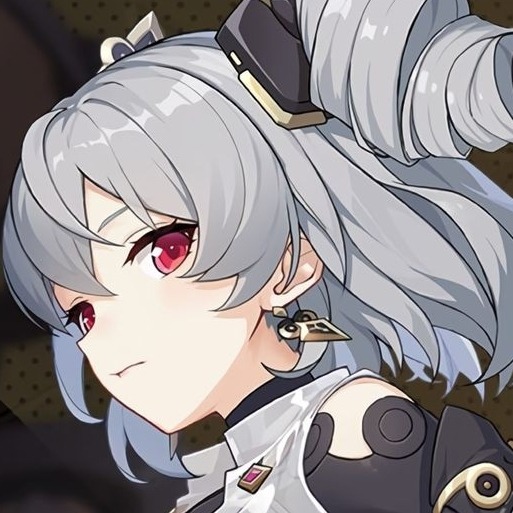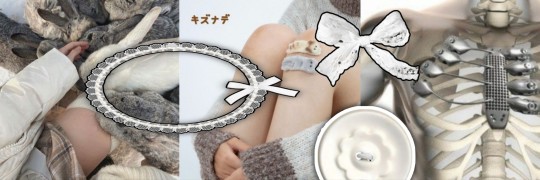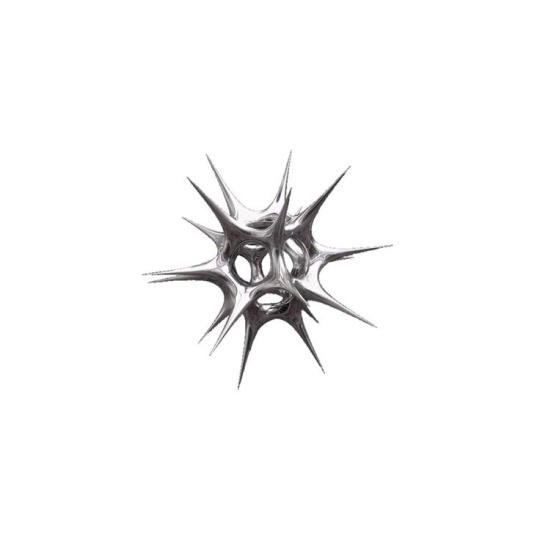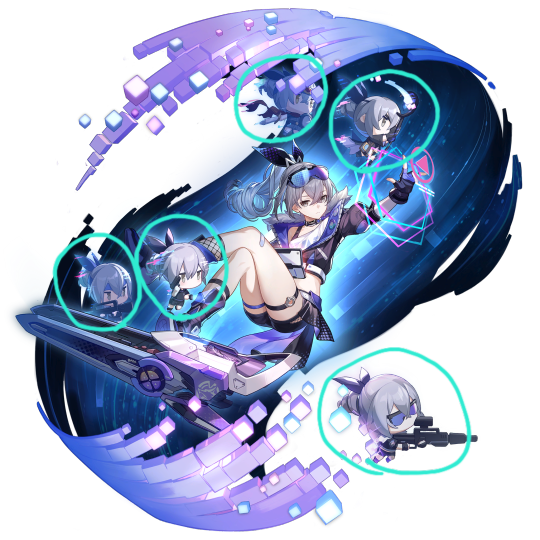#Prometheus Icons
Explore tagged Tumblr posts
Text












ALIEN: COVENANT + PROMETHEUS | Michael Fassbender as David, Walter
#michael fassbender#michael fassbender icons#alien: covenant#alien: covenant icons#alien covenant#alien covenant icons#prometheus#prometheus icons#alien prometheus#alien prometheus icons#icons#icon#twitter icons#random icons#icons without psd#movies icons
47 notes
·
View notes
Text







#ꫂ∿ ˚ 𓈒 a vi꯭da ela é u꯭ma mara꯭vilha 𓈒 ˚ ◌#divider by me !#anime#messy icons#messy layouts#random headers#random icons#anime layouts#layouts random#anime icons#anime headers#lq icons#honkai impact layouts#honkai impact icons#honkai icons#honkai impact#honkai prometheus#prometheus#prometheus icons#prometheus honkai#gray moodboard
91 notes
·
View notes
Text







#⤷ ⊹ ꊞ 🍱 ᴗ͈˳ᴗ͈#messy layouts#lawc4tboy#messy moodboard#anime layouts#messy headers#anime packs#anime messy layouts#asks#headers by me#honkai impact#hi3rd#prometheus hi3rd#prometheus icons#prometheus#prometheus packs#prometheus layouts#honkai impact layouts#honkai star rail#honkai impact icons#alternative headers
51 notes
·
View notes
Text







terminal aide 0017 💿
✦ 500x500 prometheus icons + headers, div by @benkeibear ✦ rb and credit if used ! ✦ for anon, requests are open!
#icons#honkai impact#prometheus honkai#honkai impact 3rd#hi3#honkai impact icons#prometheus icons#honkai impact layouts#layouts#RUN N' GUN◞ my edits#FLEX◞ req accepted
18 notes
·
View notes
Text






Phometeus Twitter Layouts.
• Requested by: anonymous asker.
• Reblog and credit if you save and/or use.
#🌙 • Complete#🌙 • Layouts#Honkai Impact#Honkai Impact 3rd#Honkai Impact Layouts#Honkai Impact 3rd Layouts#Honkai Impact Icons#Honkai Impact 3rd Icons#Prometheus#Prometheus Layouts#Prometheus Icons
6 notes
·
View notes
Text



This leads me to assume we missed Medusa and Charon having the fattest gossip sesh previously off screen about his ex who killed him for the fucking fates- peak mlm/wlw solidarity
#kaos spoilers#kaos netflix#kaos#prometheus#Prometheus Kaos#Charon Kaos#medusa#Medusa kaos#mlm wlw solidarity#icons
2K notes
·
View notes
Text

Ridley Scott's Prometheus by Hans Woody.
111 notes
·
View notes
Text
Anyways here's these abominations I impulsively made 🤲
♡♡♡Warning: very demure, very cutesy♡♡♡






#alien franchise#alien series#alien romulus#alien prometheus#alien covenant#aliens#alien 3#alien icons#alien pfps#inspired by another post#she was a fairy#very demure#ash is so done
8 notes
·
View notes
Text
let our response be, ella what the fuck-

#Fic Compendium (Ella)#let me cook something that isnt sad#or IS IT???????????#gellert grindelwald#albus dumbledore#grindeldore#yes its because of the mads mikkelsen pinterest photos I found yesterday#can you blame me if denmark gave the world that national icon?#I solemnly swear that I will post Prometheus had Blue Fire first#The Oracle of Nurmengard
17 notes
·
View notes
Text
Can we all agree on something?
This man is pretty.










Victor bon Frankenstein
The evil of Frankenstein 1964
#frankenstein#the evil of frankenstein#Victor Frankenstein#universal monsters#gothic horror#gothic horror movie#victorian#dark fantasy#icons#matching icons#goth aesthetic#victorian aesthetic#the modern prometheus
6 notes
·
View notes
Text






prometheus layouts requested by anon!
(credit is not needed, but appreciated)
#💚requested💚#honkai impact 3#honkai impact 3rd#honkai impact#honkai impact icons#honkai impact layouts#hi3 prometheus#honkai impact prometheus#prometheus
3 notes
·
View notes
Note
I would LOVE to read your analysis of louis as byronic hero as apposed to his reading as gothic heroine. lots of the latter and zero of the former in the fandom.
Sure! Mmm, okay, so –
What are we talking about when we talk about Gothic Heroes?
When we talk about gothic heroes, we’re really talking about three pretty different character archetypes. All three are vital to the genre, but some are more popular in certain subgenres i.e. your Prometheus Hero may be more common in gothic horror, whereas your Byronic Hero might be more likely to be found in gothic romance. That’s not to say they’re exclusive to those subgenres at all, and there is an argument that these archetypes themselves are gendered (in many ways, I think people confuse Anne being an author of the female gothic with Louis being a gothic heroine, but I’ll get into that later), but this is also not necessarily something that’s exclusive.
Anyway, I’m getting ahead of myself, haha, so the three gothic hero archetypes are:
Milton’s Satan who is the classic gothic hero-villain. You can probably guess from the name, but he was originated in John Milton’s 1667 poem, Paradise Lost. He is God’s favourite angel, but God is forced to cast him out of heaven when he rebels against him. As an archetype, he’s a man pretty much defined by his pride, vanity and self-love, usually fucks his way through whatever book or poem he’s in, has a perverted, incestuous family, and a desire to corrupt other people. He’s also defined as being “too weak to choose what is moral and right, and instead chooses what is pleasurable only to him” and his greatest character flaw, in spite of all The Horrors, is that he’s usually easily misguided or led astray. (I would argue that Lestat fits into this archetype pretty neatly, but that’s a whole other post.)
Prometheus who was established as a gothic archetype by Mary Shelley with Frankenstein in 1818. Your Prometheus Hero is basically represented by the quest for knowledge and the overreach of that quest to bring on unintended consequences. He’s tied, of course, to the Prometheus of Greek myth, so you can get elements of that in this character design too in that he can be devious or a trickster, but the most important part of him is that he is split between his extreme intelligence and his sense of rebellion, and that his sense of rebellion and boundary pushing overtakes his intelligence and basically leads to All The Gothic Horrors.
And the Byronic Hero, who as the name implies, was both created by and inspired by the romantic poet, Lord Byron in his semi-autobiographical poem, Childe Harold’s Pilgrimage which was published between 1812-1818. The archetype is kind of an idealized version of himself, and as historian and critic Lord Macaulay wrote, the character is “a man proud, moody, cynical, with defiance on his brow and misery in his heart, a scorner of his kind, implacable in revenge, yet capable of deep and strong affection.” Adding to that, he’s often called ‘the gloomy egoist’ as a protagonist type, hates society, is often self-destructive and lives either exiled or in a self-exile, and is a stalwart of gothic literature, but especially gothic romance. Interestingly too, in his most iconic depictions he’s often a) darkly featured and/or not white (Heathcliff being the most obvious example of this given Emily Bronte clearly writes him as either Black or South Asian), and b) is often used to explore queer identity, with Byron himself having been bisexual.
Okay, but what about the Gothic Heroine?
Gothic heroines are less delineated and have had more of an evolution over time, which makes sense, given women have consistently been the main audience of gothic literature and have frequently been the most influential writers of the genre too. The gothic genre sort of ‘officially’ started with Horace Walpole’s 1764 novel, The Castle of Otranto and Isabella is largely regarded as the first gothic heroine and the foundation of the archetype, and the book opens even with one of the key defining traits – an innocent, chaste woman without the protection of a family being pursued and persecuted by a man on the rampage.
The gothic heroine was, for years, defined by her lack of agency. She was innocent, chaste, beautiful, curious, plagued by tragedy and often, ultimately, tragic. Isabella survives in The Castle of Otranto, but she’s one of the lucky ones – Cathy dies in Wuthering Heights, Sybil dies in The Picture of Dorian Gray, Justine and Elizabeth both die in Frankenstein, Mina survives in Dracula, but Lucy doesn’t. There’s an argument frequently posited that the gothic genre was, and is, about dead women and the men who mourn them, and Interview with the Vampire certainly lends itself to that pretty neatly.
Of course, the genre has evolved, and in particular by the late 1800s, there was a notable shift in how the Gothic Heroine was depicted. The house became a place of imprisonment where they were further constrained and disempowered, she was infantilized and pathologized and diagnosed as hysterical, and as Avril Horner puts it in her excellent paper, Women, Power and Conflict: the Gothic heroine and ‘Chocolate-box Gothic’, gothic literature of this era “explores “the constraints enforced [by] a patriarchal society that is becoming increasingly nervous about the demands of the ‘New Woman’.”
This was an era where marriage was increasingly understood in feminist circles to be a civil death where women were further subjugated and became the property of their husbands. This was explored through gothic literature as the domestic space evolved into a symbol of patriarchal control in the Female Gothic.
Female Gothic vs Male Gothic
Because here’s the thing – the female gothic and the male gothic are generally understood to be two different subgenres of gothic literature.
While there are plenty of arguments as to what this entails, the basics is that the male gothic is written by men, and usually features graphic horror, rape and the masculine domination of women and often utilises the invasion of women’s spaces as a symbol of further penetrating their bodies, while the female gothic is written by women, and usually features graphic terror, as opposed to horror, while delving more specifically into gender politics. More than that though, its heroines are usually victimized, virginial and powerless while being pursued by villainous men.
The Female Gothic as a genre is also specifically interested in the passage from girlhood to female maturity, and does view the house as a place of entrapment, but she is usually suddenly “threatened with imprisonment in a castle or a great house under the control of a powerful male figure who gave her no chance to escape.”
That’s not Louis’ arc, that’s Claudia’s arc twice over, first with the house at Rue Royale, then with the Paris Coven, and Lestat and Armand aren’t the only powerful male figures who imprison her.
Claudia as the Gothic Heroine
Claudia in many ways is the absolute embodiment of the classic gothic heroine. Even the moment of their meeting is a product of Louis’ Byronic heroism – his act of implacable revenge against the Alderman Fenwick which prompts the rioting that almost kills her. She’s a victim of Louis’ monstrousness before they’ve even met, and while he saves her, he arguably does something worse in trapping her in the house with both himself and Lestat, holding her in an ever-virginal, ever-chaste eternal girlhood, playing into Lestat’s Milton-Satan by enhancing the perversion of family and ultimately infantilizing her out of his own desire for familial closeness.
Claudia has no family protection before Louis and Lestat – a staple of the gothic heroine – she is completely dependent on them in her actual girlhood, and again in adulthood, never developing the strength to be able to turn a companion, to say nothing about the sly lines here and there that further diminish and pathologise her (Lestat calling her histrionic, Louis making her out to be a burden, etc.). This is all further compounded again with the Coven, and when the tragedy of her life ultimately leads to the tragedy of her death.
Louis as the Byronic Hero
Not to start with a quote, but here’s one from The Literary Icon of the Byronic Hero and its Reincarnation in Emily Bronte’s Wuthering Heights:
“Generally speaking, the Byronic hero exhibits several particular characteristics. He does not possess heroic virtues in the usual, traditional sense. He is a well-educated, intelligent and sophisticated young man, sometimes a nobleman by birth, who at the same time manifests signs of rebellion against all fundamental values and moral codes of the society. Despite his obvious charm and attractiveness, the Byronic hero often shows a great deal of disrespect for any figure of authority. He was considered "the supreme embodiment [...] standing not only against a dehumanized system of labor but also against traditionally repressive religious, social, and familial institutions" (Moglen, 1976: 28).
The Byronic hero is usually a social outcast, a wanderer, or is in exile of some kind, one imposed upon him by some external forces or self-imposed. He also shows an obvious tendency to be arrogant, cunning, cynical, and unrepentant for his faults. He often indulges himself in self destructive activities that bring him to the point of nihilism resulting in his rebellion against life itself. He is hypersensitive, melancholic, introspective, emotionally conflicted, but at the same time mysterious, charismatic, seductive and sexually attractive.”
Louis as he exists in the show to me is pretty much all of those things, and I think to argue that he’s a gothic heroine not only diminishes Claudia’s arc, but robs Louis of his agency within his own story. Louis chooses Lestat, over and over again, he’s not imprisoned by the monster in the domestic sphere, he is one of the monsters who’s controlling the household, including making decisions of when they bring a child into it and when Lestat gets to live in it – he wanted to be turned, he wanted to live with Lestat in Rue Royale, and while there are certainly arguments to be made about their power dynamic within the household in the NOLA era, importantly Louis actually gained social power through his marriage to Lestat, particularly through The Azaelia, he didn’t lose it in the way that’s vital to the story of the gothic heroine.
Daniel Hart even said it in a recent twitter thread about Long Face, but there is an element of Lestat and Louis’ relationship that is transactional, and to me, for that to exist, they both have to have a degree of control over their circumstances and choices in order to negotiate those transactions. Claudia is the one who can’t, she’s the one who’s treated effectively as property, and she’s the one who lacks control over her circumstances.
While you could perhaps argue the constraints of the apartment in Dubai lend more to the gothic heroine archetype, I’d argue it as furthering the Byronic trope again by being representative both of Louis’ self-destruction and self-imposed exile. As Jacob has said a few times, Louis does seem to have known to a degree that Armand was involved in Claudia’s death on some level, and it’s that guilt and misery that has him allowing Armand his degree of control. The fact that Louis was able to leave Armand as easily and as definitively as he was I think demonstrates that distinction too – after all, to compare that ending to Claudia’s multiple attempts to leave the confines of the patriarchal house, both in Rue Royale and Paris, which were punished at every turn – first by her rape, then by Lestat dragging her back off the train, and then by the Coven orchestrating her murder.
Louis gets to leave because Louis can leave, he has both the social and narrative power to, and the fact that he does is, to me, completely at odds with the gothic heroine. Louis can, and does advocate for himself, Louis is proud, moody, cynical. Defiance is a key part of his character, just as his exile from NOLA society due to his race, and his chosen rejection of vampire society in Paris, is. He’s intelligent and sophisticated, travels the world, and has misery in his heart, guilt that eats him up, and self-destructive tendencies. That’s a Byronic Hero, baby!
#i also agree with jacob when he says he has a lot more power in his relationship with lestat than he'd admit to#i also think the house in rue royale is both constraining AND liberating for louis#as he's able to live with a sort of honesty he couldn't in his mother's house#lestat wields a lot of power in it of course but louis does too#i could keep talking about this but i think that's probably enough for this morning haha#louis de pointe du lac#amc interview with the vampire#iwtv asks#claudia de pointe du lac#welcome to my ama
248 notes
·
View notes
Text
The X Files art masterpost
I've decided to put all of it in one place. will possibly get updated, but here's what I've got so far
studies
timelapses
traditional art
environment studies: 1 2 3
posters:
Bad Blood, Ascension, Ice, The Unnatural
The Post-Modern Prometheus, Memento Mori, Demons, All Things
Fight the Future: 1 2 3 4
Cancer arc posters
Wetwired
Pilot, Darkness Falls, Triangle, Fight the Future
How the Ghosts Stole Christmas
just some general posters for the show: 1 2 3
Dana Scully iconic moments: 1 2 3 4 5
msr playlist part 1 msr playlist part 2
miscellaneous: 1 2 3 4 5 6 7 8 9 10 11 12 13 14 15 16 17
some attempts to recreate the ✨retro✨ vibe: 1 2 3 4 5
pulp cover/noir style experiments
my most controversial post
queer msr posts: 1 2 3 4 5
prints
fic illustrations: 1 2 3 4
bonus: text posts
and in case any of the above makes someone start watching the show, just remember:

#it's a bad show with very good actors#and very aesthetically pleasing (at least the first few seasons)#don't fight me on the badness of it i know I'm right#the x files#txf masterpost
620 notes
·
View notes
Text

P R O M E T H E U S
Embark towards the Heavens in THE CELESTIAL EDITION!
A fan-edit 10 years in the making.
I think you may believe me when I say my love for Prometheus knows no bounds. This bold, new vision for the Alien franchise, which I have grown up with all my life, blew my mind. It dared to answer some of the most unfathomable questions we are capable of asking ourselves, all while combining Alien, anthropology, the ancient alien theory, creationism and religion together, into a complex and definite answer. It reveals most of its secrets in such intricate, hidden ways and truly is the most courageous and important film of modern science fiction.
So, my friends, you can probably imagine what a great pleasure it is for me to deliver this project to you, at long last. The first draft of this extended cut dates from May 2014. The goal in delivering this definitive edition today remains the same as then : deliver the best possible way to watch Prometheus.
I think we were all surprised to see Romulus acknowledge Prometheus in such a way, so much so that a wave of appreciation for the film began to resonate all over the internet. So whether you feel like revisiting the film, experiencing it in another way, or giving the story and its characters another chance, this is the perfect opportunity.
Including not only a vast selection of deleted scenes, but also a major part of the blu-ray extras results in richer characters and a wider view into their world. The extras, which have become an essential part of my rewatches, are introduced into the first act, all before the crew even awakes, giving even the biggest rewatchers a refreshing kick-start. I have also reintroduced a few unused tracks and an alternate creature design.
I will not explain in complete detail what is different about this fan-edit. I think it's worth seeing for yourself. Not all deleted scenes and extras are included. There’s a special homage to Elisabeth during the transmission sequence. I really loved her, and her quest...
Something I believe is worth noting is the exclusion of the "Engineer Speaks" deleted scene. It does not add much. Weyland repeats himself, and verbalises the evident themes at play, while we still do not get to truly know what the Engineer says. Instead, I find the idea that our very own makers would answer our hopes and questions with nothing but silence and anger far more horrifying. It perfectly aligned with the film thematically, and so I left the scene intact.
If you watch it, you may also notice that I have spared us a few seconds of Millburn and Fifield's dumbest moments. I do not dislike them, they were absolutely iconic, but this makes them more likeable and credible in my book.
Disclaimer : I could not get my hands on the extras in great quality. I own the film twice, but have no way to port them. I may eventually re-upload with a visual fix some day, who knows... Please forgive the slight drop in quality for these sequences.
Here is the trailer for my extended cut. You can watch the full fan-edit here!
Feedback and shares are immensely appreciated. Please share using the trailer or post only, thank you!
Download for HD - DO NOT USE CELLULAR DATA (18GB)
Follow @uscss-prometheus on Tumblr.
#prometheus#ridley scott#fan edit#fan-edit#alien#alien romulus#20376000#video editing#alien franchise#dark#xenomorph#scifi#horror#futuristic
95 notes
·
View notes
Note
Prometheus has done something to my brain, and I'm chewing the bars of my enclosure. Amazing, iconic, show stopping, horrible and terrific (root word terror).
I sure hope Jazz and his friends put their foot RIGHT down and make him take yknow, two years of a therapy vacation 💀
(Prometheus)
Glad to make your day a little brighter and more joyful!!! 🤗🥰 We can all use the positive vibes of uplifting content!!!
Also therapist whomst... Zocdoc over here showing 0 results for therapists who specialize in full body decimation and reconstruction 😔
40 notes
·
View notes
Text
Random thought: Silver Wolf's virtual companions seem to loosely correspond to the other Stellaron Hunters (+ a bonus)

Warning: Long post
For those not in the know, SW's weapon holds an A.I of her creation, which she calls Prometheus (hmmm). Prometheus comes with five modules -the chibis pointed out above- each of which has its own special name: Friend, Demon Lord, Whitecollar, Servant, and Preschool Classmate.
I'm unsure if they all look and act the same as they did upon creation, so the theory here is that she based or modified them using her colleagues as inspiration after joining the Hunters. Now, here are the parallels I think make the most sense:
1) Friend -> Kafka. Most of SW's appearances are on joint missions with Kafka specifically, and that -along with the banter they exchange all the time- leads me to assume she's the closest colleague to our tiny hacker. Friend is also the first and currently only companion that actually talks to us ingame and outside of the game (she shows up in one of SW's lines and in her Keeping Up With Star Rail video), and who was the first Hunter we encountered in the story?
Yeah.
2) Demon Lord -> Ren. According to SW's second character story, the companion is inspired by a poster she saw one time, and she based it off the idea of a veteran who lost the ability to speak. Ren isn't perpetually silent, of course, but he's a man of very few words, and is strongly associated with demon imagery as well (that one vidyadhara elegy, the kit icons, the clothing design, etc.). I also think Demon Lord is the chibi on the top left with the sword, right next to Friend, and what would you know- there's only one Hunter we know whose signature weapon is a sword!
(That and he's also seen a lot alongside Kafka. Neat.)
3) Whitecollar -> Sam. Admittedly there's pretty much nothing to go on in regards to Sam, and that makes him a weak link in this theory, so I hope for some future crumbs that can clarify things. All we know about him so far is that he's a more straightforward and efficient sort of guy who doesn't fool around on the job- if SW's express visit line is anything to go by. That makes for a veeeery threadbare argument that he'd make a good whitecollar with these qualities, but honestly they apply to any job, and Sam obviously doesn't sit around in an office all day...
4) Servant -> Elio. This is a pretty simple one: Elio is literally called Destiny's Slave. If that's not Servant, then who is? More crumbs are always welcome to give further proof or contradict this assumption, but for now it seems pretty reasonable to me.
Bonus:
5) Preschool Classmate -> Trailblazer. This one is the most interesting to me because, here's a fun fact: Preschool Classmate was actually deleted soon after its creation. This parallels the Trailblazer being left behind to join the Express and set the script in motion, in a way, and might explain SW leaving alongside Kafka without talking to them at all. But then this raises the question of why she personally visits them at the express, and why she became their gamer buddy.... hmmmmmm.....
Overall, I think this is a pretty nice design element, and while my theory has little substance to go on, I think it would be better if this wasn't a mere coincidence. If anyone has anything more to share on the topic, then by all means, go ahead! I love hearing about small tidbits and trivia and fuel for the found family agenda!
#if you didn't scroll away four lines in then salutations#claim your cookie of choice here!#honkai star rail#hsr#stellaron hunters#silver wolf#hsr kafka#hsr blade#hsr sam#hsr elio#trailblazer#pink's musings#(btw there's further stuff about sam but they go into leak territory. if you wish to hear that please ask and i'll dm)
178 notes
·
View notes